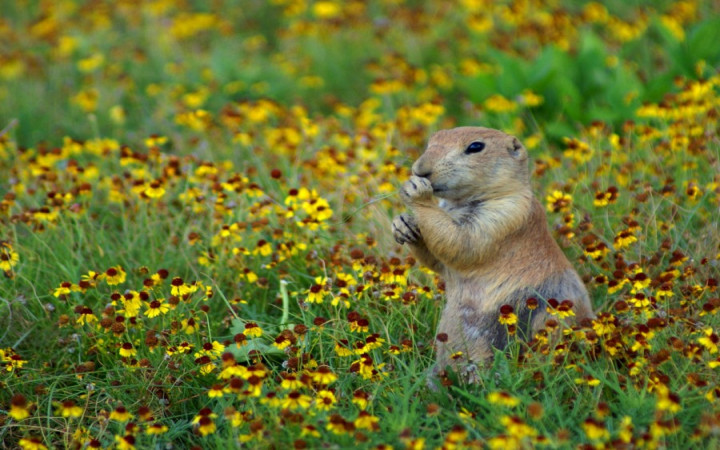What kind of area do you live in? Maybe you live in the mountains. Perhaps your home is near the coastline of a large lake or an ocean. Many people live in deserts. Millions of people live in areas called prairies.
If you're a fan of Laura Ingalls Wilder, you're probably familiar with the Little House on the Prairie series of books, television shows, and movies. But did you ever stop to WONDER exactly what a prairie is?
When early explorers first pushed westward past the Appalachian Mountains, they encountered a landscape that was different from the mountainous and forested areas they were used to. These interior lowlands were filled with wildflowers, grasses, and plants and didn't have nearly as many trees.
Explorers called these areas “prairies," borrowing a word from the French that meant “meadow." Ecologists classify prairies as temperate grasslands, because they are characterized by plants and grasses rather than trees.
Prairies are mainly found in the interior lowland areas of North America. In the United States, prairies can mainly be found in the area known as the Great Plains, which includes most of the states of North Dakota, South Dakota, Nebraska, Kansas, and Oklahoma. Prairies also constitute large parts of many other states, including Montana, Wyoming, Colorado, New Mexico, Texas, Missouri, Iowa, Illinois, Indiana, Wisconsin, and Minnesota.
Prairies cover almost 1.5 million square miles of land in the U.S. Rainfall decreases as you move from east to west. Eastern prairies tend to be moister, while western prairies are usually drier the closer they get to desert areas.
The climate of prairies is influenced greatly by their central location. They're shielded on the east and west by mountains, and they're far from the oceans. As a result, prairies can experience a wide range of temperatures, from hot summers to cold winters. In addition to temperature fluctuations, prairies are also known for their strong winds.
Over the course of history, large grassland fires often consumed prairies. These fires were an important part of the prairie ecosystem, as they helped to purge invasive species and trees. Without these fires, prairies would have been overtaken by trees and turned into forest areas.
Because of these fires, most prairie plants develop deep root systems that allow them to survive fires and temperature swings. It's not uncommon for most prairie plants to have two-thirds of their matter underground.
As these plants die out each winter and grow again each spring, parts of their root systems die underground and add rich organic matter to the soil. This is why prairie lands are some of the best farming lands in the U.S.
Prairies have been important sources of food for many grazing animals. The natural grasses that grow on prairies are good sources of food for a wide variety of animals, including cattle, deer, buffalo, and rabbits. Of course, one of the other animals that calls the prairie its home — and bears its name — is the famous prairie dog!
Unfortunately, many prairie lands have been lost over the years to farming and the building of large cities. Many states are beginning to preserve their remaining prairie lands, so that they can reintroduce native wildlife and plants to keep the rich heritage of prairies alive for future generations.




